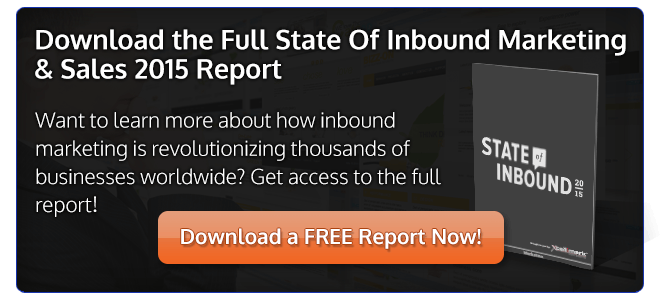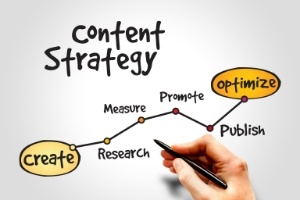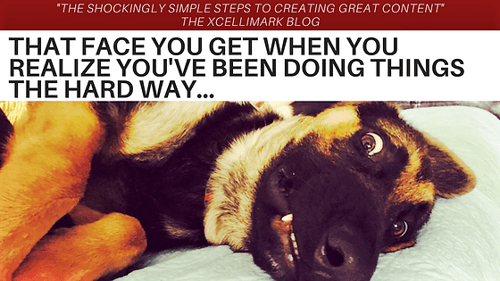For Inbound Marketing Content Is Key, But It Can't Stand Alone

 Some companies believe that content is pretty much the only component of an inbound marketing campaign, so they tend to neglect other essential parts such as calls-to-action, design layout and being active on social media.
Some companies believe that content is pretty much the only component of an inbound marketing campaign, so they tend to neglect other essential parts such as calls-to-action, design layout and being active on social media.
But an effective campaign relies on more than just great content.
>>> Get the inside scoop on the State of Inbound
directly from marketing professionals. <<<
Content Is Key
There's no question that content for inbound marketing is a crucial part of your strategy, and content types such as blog posts, articles and white papers lay the foundation for a successful campaign.
In fact, HubSpot has done several studies on content marketing and determined that:
- Organizations that make blogging a priority are 13 times as likely to see a return on investment as those that don't.
- Businesses that have more than 400 pages of content on their website get six times more leads than businesses with sites that have between 51 and 100 pages.
- While 52 percent of organizations that blog at least once a month acquire customers through their website, a full 82 percent gain customers through their website when they blog daily.
This data indicates that not only does an inbound marketing strategy require content, the regular production of content is essential. However, this still doesn't tell the whole story.
Quality Matters More Than Quantity
The Internet has become filled with information generated by organizations across various industries. While this is not a bad thing, the amount of content available can be overwhelming.
When content is generated just for the sake of creating content, the quality often suffers. And since there is so much content out there, your blog articles and content offers need to be top-quality and highly valuable to your readers.
It's also important to note that there may be a limit to how much new content will benefit your company. Moz recently did a study using their own website as a guinea pig and tested posting new content three times per week instead of five times a week, as they had been doing. They also tried posting 10 times per week by adding 2 new articles on every weekday.
The tests saw fewer conversions on weeks where there were fewer posts and more conversions when they were generating more content. However, the changes were slight and, in some cases, believed to fall within the margin of error.
Results indicate that creating new content on a regular basis generates new traffic and conversions, but you don’t have to be overwhelmed by feeling like you have to produce an exorbitant number of articles right out of the gate.
Don't let the number of articles stop you from getting started. Feel free to start small and build up to more articles and content offers as you are able to scale.
It’s better to start somewhere than to not start at all!
Content Is Only Beneficial If People Can Find It
We’ve established that regular content production is a good thing even if you can’t produce an excessive amount of it. But it's also important to note that content only works if your target market can find it.
If your business isn't putting a significant effort into making sure that your potential customers are reading your content, you’re unlikely to benefit from it.
Even well-established websites that have a steady stream of traffic make a point of promoting their content to ensure they receive the highest number of visitors possible. Few people visit the same website every day to check for new posts, so your organization should always be on the lookout for new readers and customers.
There are a couple of ways your business can use the inbound marketing process to help ensure that your content is found, including:
- Social Media Marketing - After publishing your content, let people know about it by creating a status update with a link to the article, blog post or case study. You can also decide upon an ad budget and pay to sponsor a post so it shows up in the news feed of those who aren't following your brand on social media.
Platforms such as Facebook and LinkedIn, allow longer status updates than the 140 character limit imposed by Twitter enabling you to post content in its entirety or a small preview with a link to read more. Whatever you decide to post, make sure you keep conversions in mind when writing and linking out to your content. - Email - Email is a great way to alert people when your site has new content. One way to do this is by encouraging visitors to sign up for your newsletter or blog when they come to your site. That way they can subscribe to get notified of new blog posts or articles.
A huge advantage of email marketing is that it’s low in cost and enables your business to stay in touch with potential and existing customers.
Content is a cornerstone of a successful inbound marketing campaign. Producing quality content can provide the foundation needed for bringing in business, but it is only one part of the whole.
Implementing A Successful Inbound Marketing Campaign
Knowing the types of online and inbound marketing tools available to you is not the same as being able to leverage these tools and get great results. For content marketing tactics listed above to be effective, you need to know how to create headlines that grab attention and how frequently to share your content.
If you're interested in finding out how inbound marketing can work for you, let us help. We make a point of staying on top of the ever-changing Internet marketing landscape. Our experience and inbound marketing tools help you attract new customers and build your online reputation.
Get in touch with us online or give us a call at your convenience to find out more about our services.








